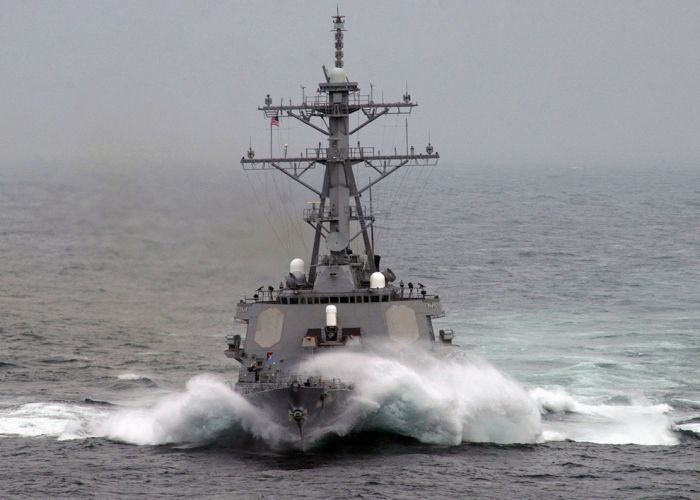|
|
The United States Navy
|
The U.S. Navy grew into a formidable force in the years prior to World War II, with battleship production being restarted in 1937, commencing with the USS North Carolina (BB-55). Though ultimately unsuccessful, Japan attempted to allay this strategic threat with the 1941 surprise attack on Pearl Harbor. Following American entry into the war, the U.S. Navy grew tremendously as the United States was faced with a two-front war on the seas. It achieved notable acclaim in the Pacific Theater, where it was instrumental to the Allies' successful "island hopping" campaign. The U.S. Navy participated in many significant battles, including the Battle of the Coral Sea, the Battle of Midway, the Battle of the Philippine Sea, the Battle of Leyte Gulf, and the Battle of Okinawa. By 1943, the Navy's size was larger than the combined fleets of all the other combatant nations in World War II. By war's end in 1945, the United States Navy had added hundreds of new ships, including 18 aircraft carriers and 8 battleships, and had over 70% of the world's total numbers and total tonnage of naval vessels of 1,000 tons or greater. At its peak, the U.S. Navy was operating 6,768 ships on V-J Day in August 1945.
Doctrine had significantly shifted by the end of the war. The United States Navy had followed in the footsteps of the navies of Great Britain and Germany which favored concentrated groups of battleships as their main offensive naval weapons. The development of the aircraft carrier and its devastating utilization by the Japanese against the U.S. at Pearl Harbor however shifted U.S. thinking. The Pearl Harbor attack destroyed or took out of action a significant number of U.S.N. battleships. This placed much of the burden of retaliating against the Japanese on the small number of aircraft carriers.
The potential for armed conflict with the Soviet Union during the Cold War pushed the U.S. Navy to continue its technological advancement by developing new weapons systems, ships, and aircraft. United States naval strategy changed to that of forward deployment in support of U.S. allies with an emphasis on carrier battle groups.
The Navy was a major participant in the Vietnam War, blockaded Cuba during the Cuban Missile Crisis, and, through the use of ballistic missile submarines, became an important aspect of the United States' nuclear strategic deterrence policy. The United States Navy conducted various combat operations in the Persian Gulf against Iran in 1987 and 1988, most notably Operation Praying Mantis. The Navy was extensively involved in Operation Urgent Fury, Operation Desert Shield, Operation Desert Storm, Operation Deliberate Force, Operation Allied Force, Operation Desert Fox and Operation Southern Watch.
|
|









